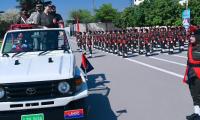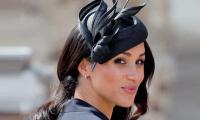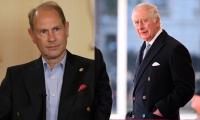On an ethereally sunny and surreal day in Doha, in the company of a dear Qatari artist friend, we walked into Qatar Museum Gallery Alriwaq, now exhibiting an awe-inspiring retrospective of the pre-eminent Iraqi artist, Dia Azzawi.
In two complementary exhibitions, one here in Alriwaq and another at Mathaf: Arab Museum of Modern Arts, we are treated to a rare retrospective of a monumental figure in contemporary and modern Arab art.
When Azzawi began painting, Iraq was just emerging from under the yoke of British imperialism. When Azzawi painted his latest work for this exhibition, US imperialism under George W Bush had laid waste to his homeland. Imagine an artist of Azzawi’s iconic gaze and then ask yourself what would that history do to him?
In an interview with Al Jazeera, Azzawi himself has described this retrospective as a “manifesto against events following the US invasion of Iraq in 2003”.
Putting all these indications together, you may think the breathtaking spectrum of Azzawi’s oeuvre is a manifesto against the barbarity of George W Bush’s invasion, occupation, and subsequent destruction of Iraq. But artistically documenting the devastation of Azzawi’s homeland is only one aspect of his lifetime achievements. He has the larger Arab and Muslim world, the even more far-reaching worlds at the receiving end of US and European militarism, under his unforgiving gaze.
Azzawi is politically mesmerised and aesthetically beguiled by nothing less than the entire lingering legacy of the Arab world, in fact, the very idea of it. Take Azzawi’s art out of that world, it will lose its aesthetic intuition of where and what it is all about.
We entered a colossal gathering of one of the towering figures of contemporary Arab art on wide, white, generous, and happy walls bereft of a single spectator except the two of us. The space was awe-inspiring, meditative, mournful. We meandered through the galleries until we reached one of his signature masterpieces, “Sabra and Shatila Massacre” (1982-1983). There was a bench at a necessary distance. We sat down in quiet prayer.
“All I am trying to do,” I glanced at the catalogue citing Azzawi in my hand, “is to calmly remove the human from the dungeons of oppression and murder, and deliver it to a place where it is possible for its body to be spread wide across the face of the earth, in order for it to be broken and thereby released from the legacy which makes it an oppressed creature.”
Azzawi’s retrospective feels like a painterly panegyric, violently lyrical in its mournful remembrance of things past and present, elegiac in its visions of his ruinous homeland. In his overwhelming broad brushes, he fuses the memorial tenderness of his fellow Iraqi Badr Shakir al-Sayyab with the daring defiance of Pablo Picasso and Juan Miro.
Azzawi dwells on the brutality of violence, face-to-face, as he looks deeply into the abyss of the terror of imperial hubris raining death and destruction on his homeland – not just on Iraq, but particularly on Palestine, which he has transformed from factual evidence to a furious allegory of the world .
Worlds are falling further and further apart. It is an uncanny feeling to come so close and personal with the works of Azzawi’s in the heart of an Arab world that is coming to pieces from Syria to Yemen.
Azzawi is Iraq. Azzawi is the Arab world: bleeding and singing and painting its pains for the world to see. But who is watching?
This article has been excerpted from: ‘When nations fall their artists rise.’ Courtesy: Aljazeera.com
A representational image showing residents walking at a wholesale market in Karachi. — AFP/FileOnce again there is...
A representational image showing late Pakistani human rights activist and Supreme Court lawyer Asma Jahangir. —...
A representational image showing a security personnel sanding guard beside a ship carrying containers at Gwadar port....
A health worker administers polio vaccine drops to a child during a door-to-door polio vaccination campaign in Lahore,...
Armed militants of the banned Tehreek-e-Taliban Pakistan pose for a photograph in Orakzai Agency. —...
An aeroplane of the national flag carrier of Pakistan is seen in this file photo. — AFPWhile Pakistan considers...







